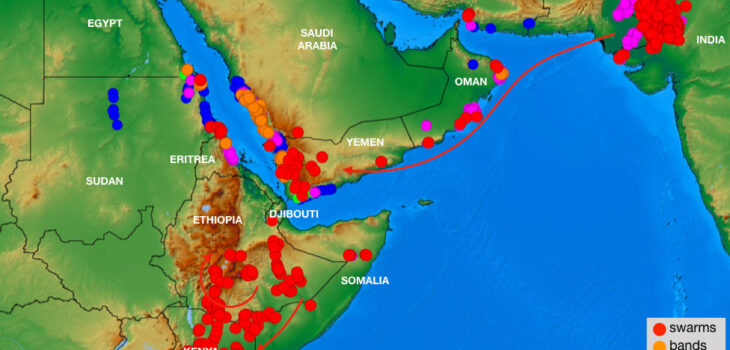
Desert Locust
Locusts in East Africa threaten to become a plague
The millions of people in East Africa are facing an impending disaster swarms of locusts are ravaging fields of crops. The UN is calling for urgent actions saying the food security of people in the affected region is at risk. More rainfall in the weeks ahead will bring fresh vegetation to feed new generations of the pests.
After devastating large areas in Somalia, Ethiopia and Kenya, the swamps have now reach Uganda and that’s threatening South Sudan and Tanzania.
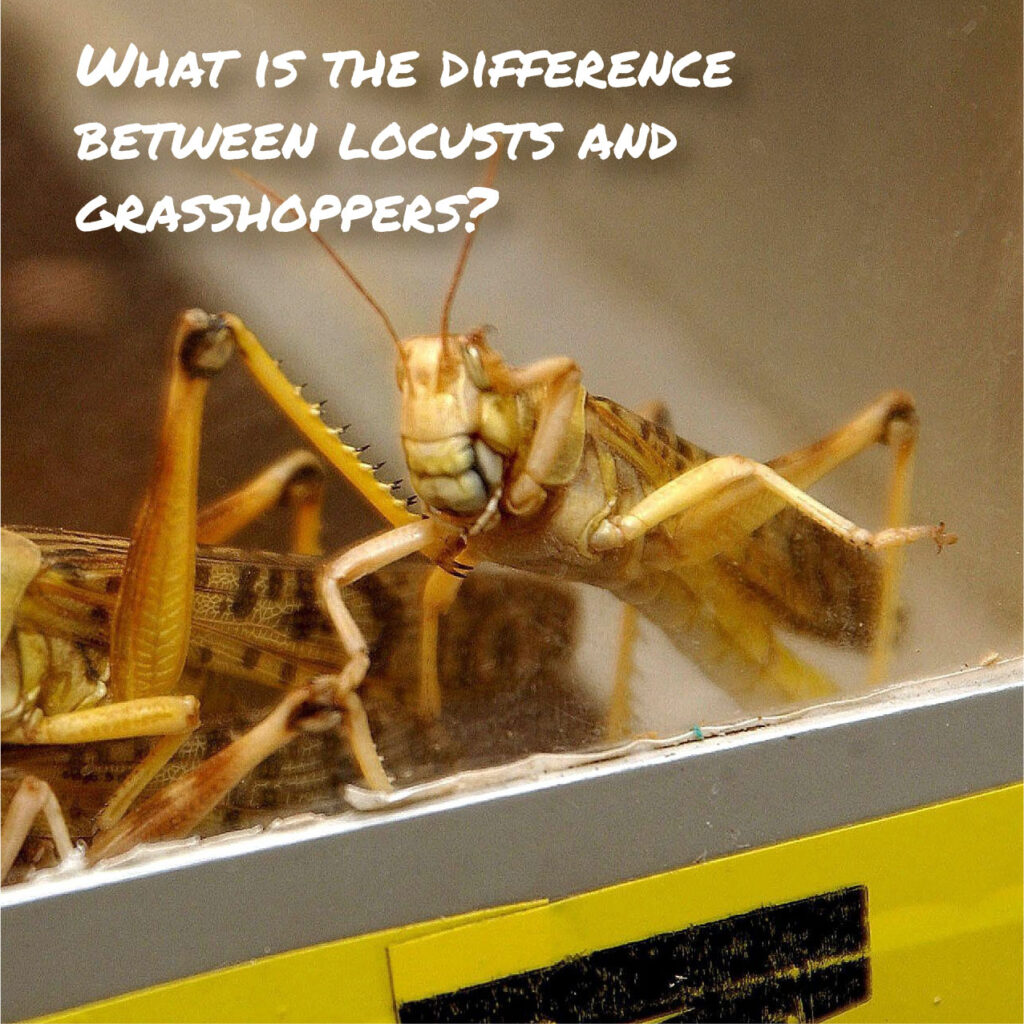
What is the difference between locusts and grasshoppers? And what is a Desert Locust?
Locusts are part of a large group of insects commonly called grasshoppers which have big hind legs for jumping. Locusts belong to the family called Acrididae. Locusts differ from grasshoppers in that they have the ability to change their behaviour and habits and can migrate over large distances.
The Desert Locust is one of about a dozen species of short-horned grasshoppers (Acridoidea) that are known to change their behavior and form swarms of adults or bands of hoppers (wingless nymphs). The swarms that form can be dense and highly mobile. The Latin name for Desert Locust is Schistocerca gregaria (Forskal).
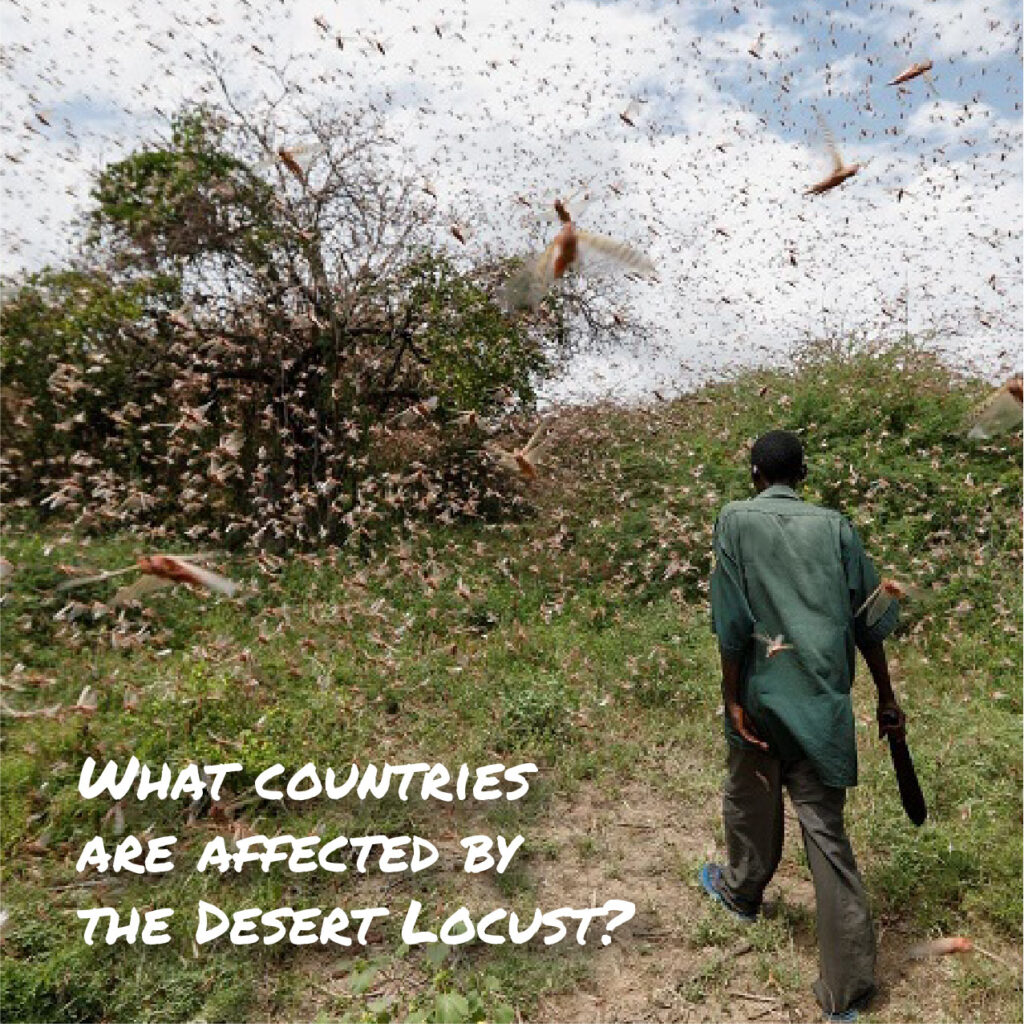
What countries are affected by the Desert Locust?
During quiet periods (known as recessions) Desert Locusts are usually restricted to the semi-arid and arid deserts of Africa, the Near East and South-West Asia that receive less than 200 mm of rain annually. This is an area of about 16 million square kilometers*, consisting of about 30 countries.
During plagues, Desert Locusts may spread over an enormous area of some 29 million square kilometres, extending over or into parts of 60 countries. This is more than 20% of the total land surface of the world. During plagues, the Desert Locust has the potential to damage the livelihood of a tenth of the world’s population.
*The area is approximately the size of Russia. (17 million sqare kilometers)
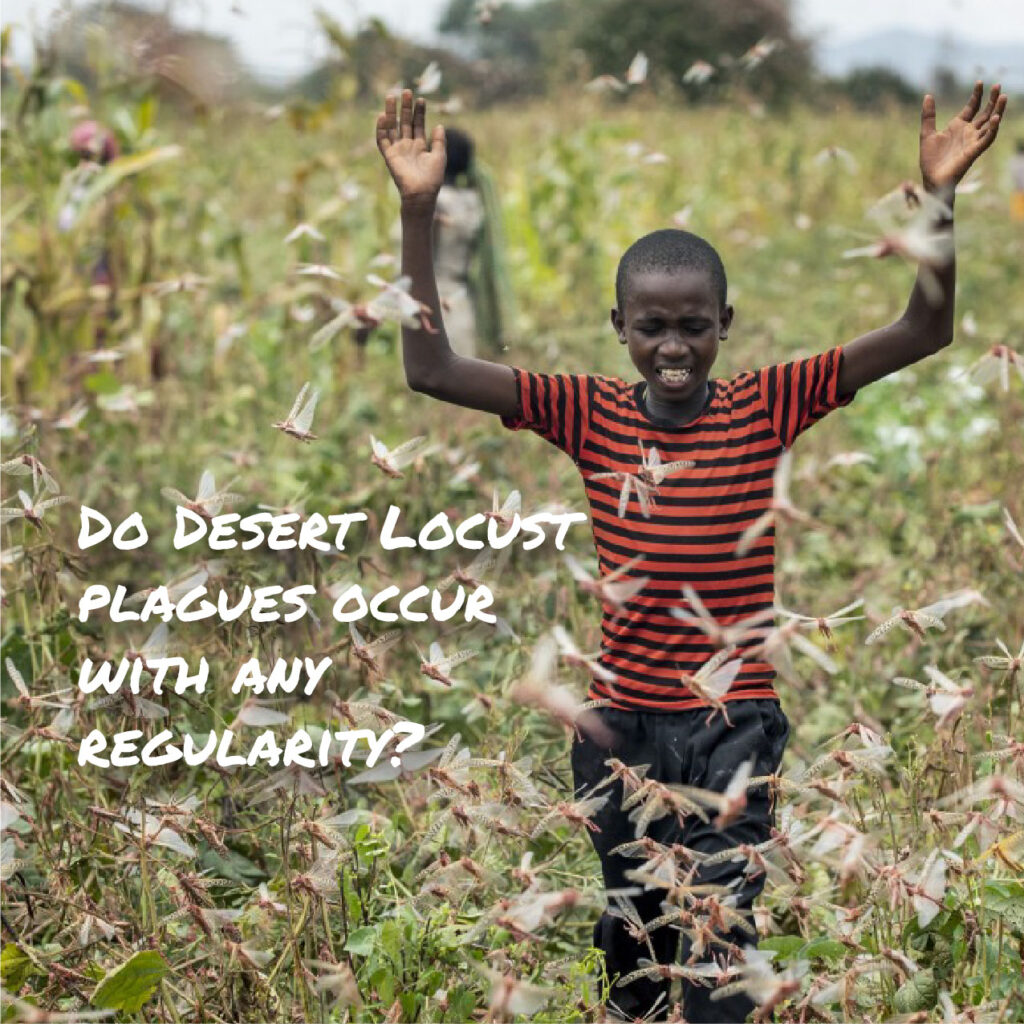
Do Desert Locust plagues occur with any regularity?
There is no evidence that Desert Locust plagues occur after a specific number of years. Instead, plagues develop intermittently. Plagues of locusts have been reported since the Pharaonic times in ancient Egypt. During this century, Desert Locust plagues occurred in 1926-1934, 1940-1948, 1949-1963, 1967-1969 and 1986-1989.
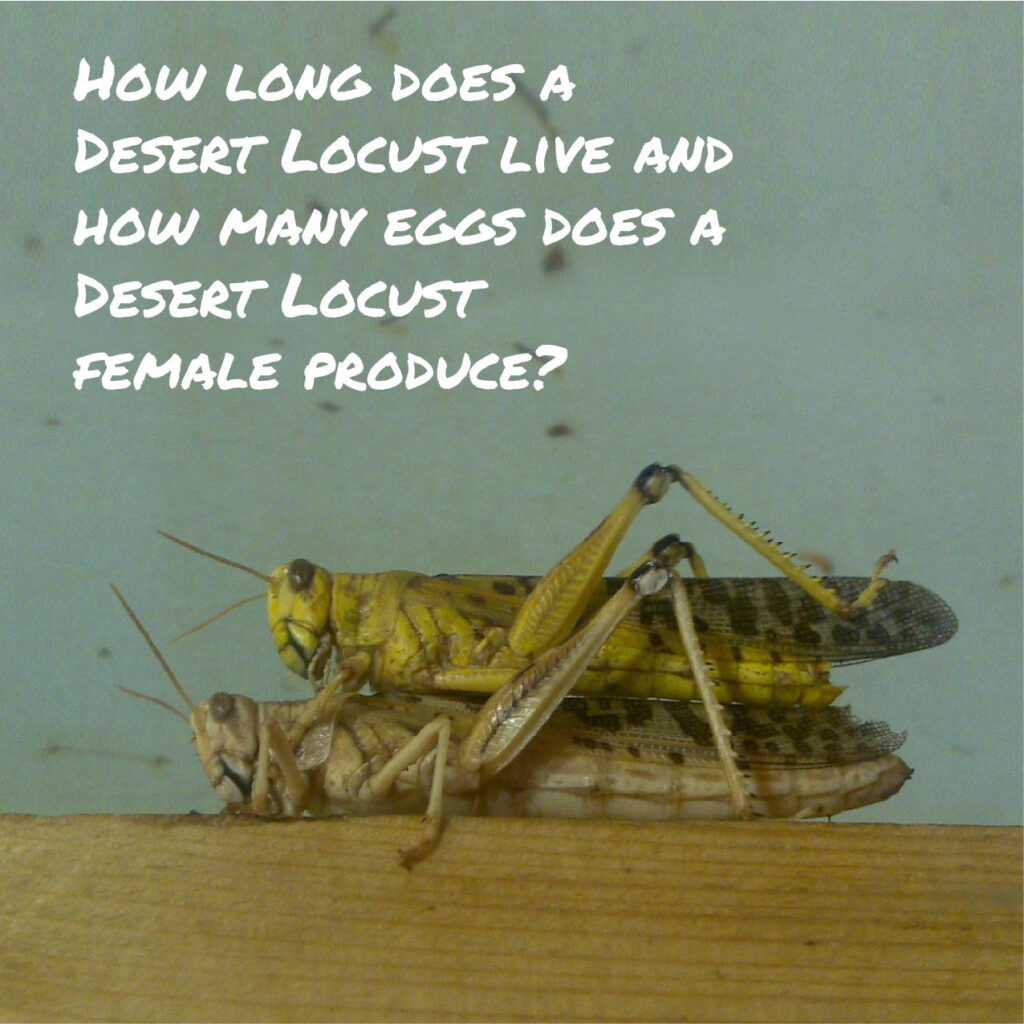
How long does a Desert Locust live and how many eggs does a Desert Locust female produce?
A Desert Locust lives a total of about three to five months although this is extremely variable and depends mostly on weather and ecological conditions. The life cycle comprises three stages: egg, hopper and adult. Eggs hatch in about two weeks (the range is 10-65 days), hoppers develop in five to six stages over a period of about 30-40 days, and adults mature in about three weeks to nine months but more frequently from two to four months.
Desert Locust females lay eggs in an egg pod primarily in sandy soils at a depth of 10-15 centimetres below the surface. A solitary female lays about 95-158 eggs whereas a gregarious female lays usually less than 80 eggs in an egg pod. Females can lay at least three times in their lifetime usually at intervals of about 6-11 days. Up to 1,000 egg pods have been found in one square metre.
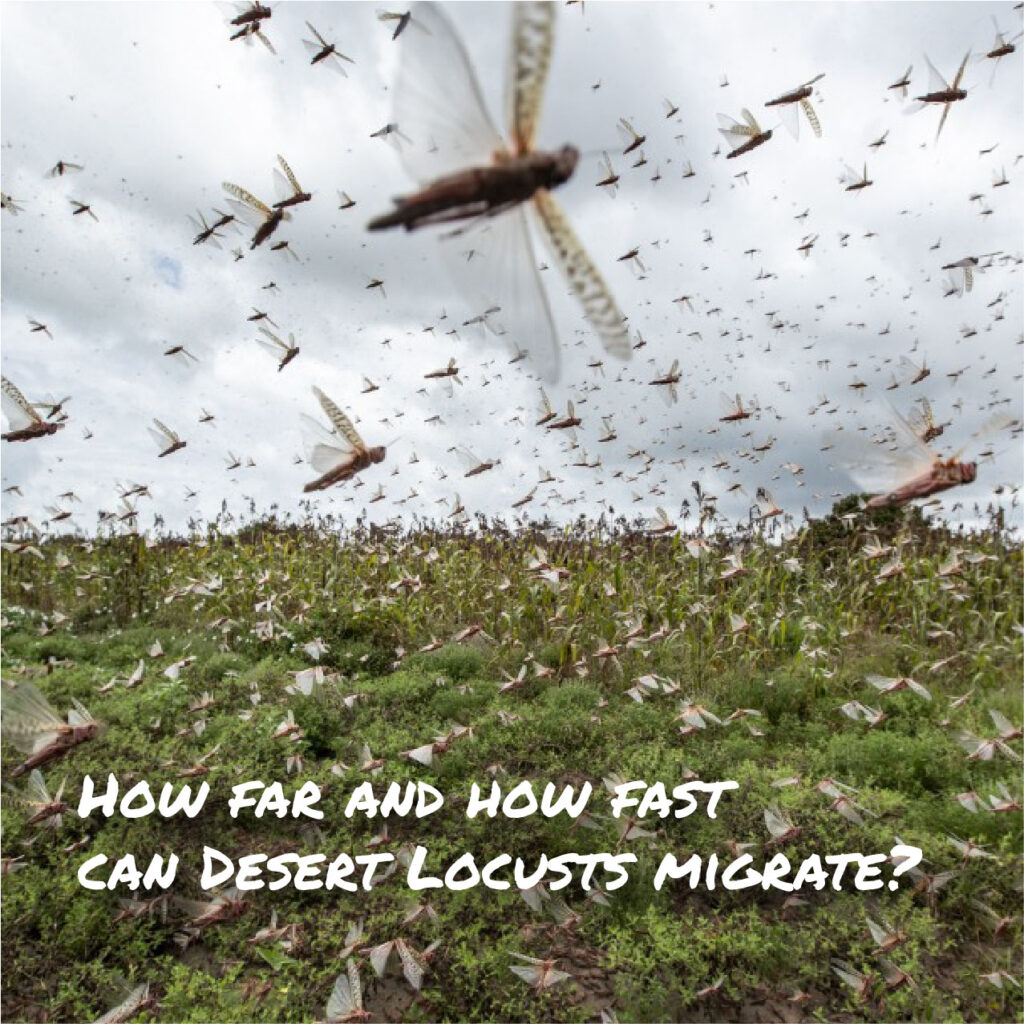
How far and how fast can Desert Locusts migrate?
Desert Locusts usually fly with the wind at a speed of about 16-19 km/h depending on the wind. Swarms can travel about 5-130 km or more in a day. Locusts can stay in the air for long periods of time. For example, locusts regularly cross the Red Sea, a distance of 300 km. In the past there have been some spectacular and very long distance swarm migrations, for example from North-West Africa to the British Isles in 1954 and from West Africa to the Caribbean, a distance of 5,000 km in about ten days in 1988. Solitary Desert Locust adults usually fly at night whereas gregarious adults (swarms) fly during the day.

How much food can a Desert Locust eat?
A Desert Locust adult can consume roughly its own weight in fresh food per day, that is about two grams every day. A 1 km2 size swarm contains about 40 million locusts, which eat the same amount of food in one day as about 35,000 people, 20 camels or 6 elephants. This is based on a person eating an average of 2.3 kg of food per day, according to the USDA.
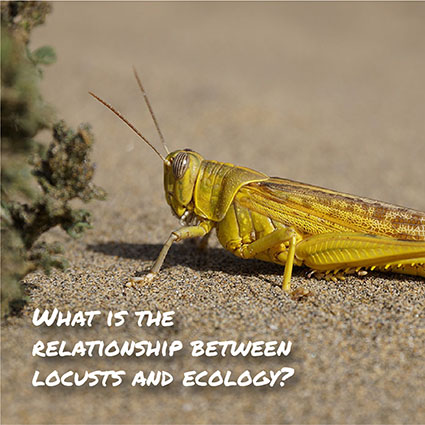
What is the relationship between locusts and ecology?
When conditions are favourable for reproduction, locust numbers increase and when they are not, numbers decrease either by natural mortality or through migration. For the Desert Locust, favourable conditions for breeding are (1) moist sandy or sand/clay soil to depths of 10-15 cm below the surface, (2) some bare areas for egg-laying, and (3) green vegetation for hopper development. Often favourable conditions may exist in the desert but there are no locusts present. Therefore, the presence of moist soil and green vegetation does not automatically mean that there are locusts around!
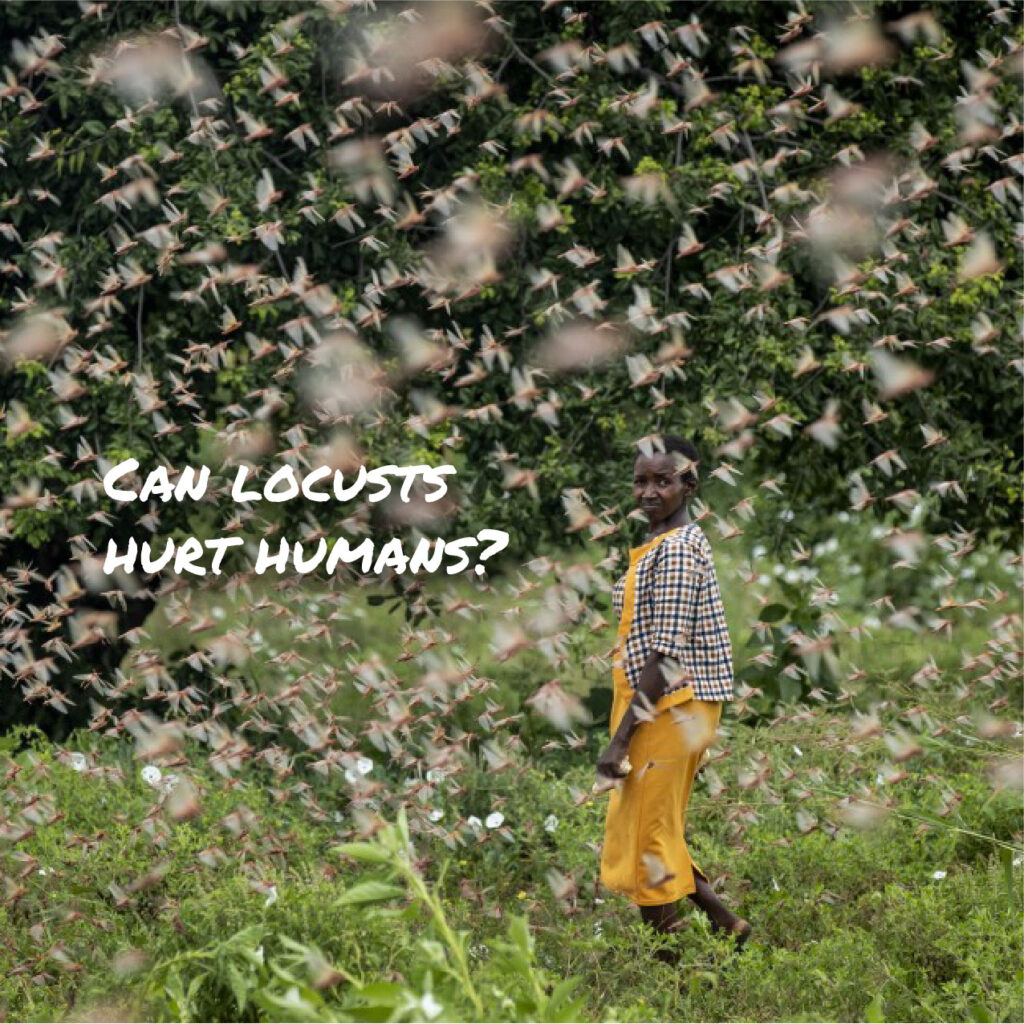
Can locusts hurt humans?
Locusts do not attack people or animals. There is no evidence that suggests that locusts carry diseases that could harm humans.

How can locusts be controlled?
At present the primary method of controlling Desert Locust swarms and hopper bands is with mainly organphosphate chemicals applied in small concentrated doses (referred to as ultra low volume (ULV) formulation) by vehicle-mounted and aerial sprayers and to a lesser extent by knapsack and hand-held sprayers.
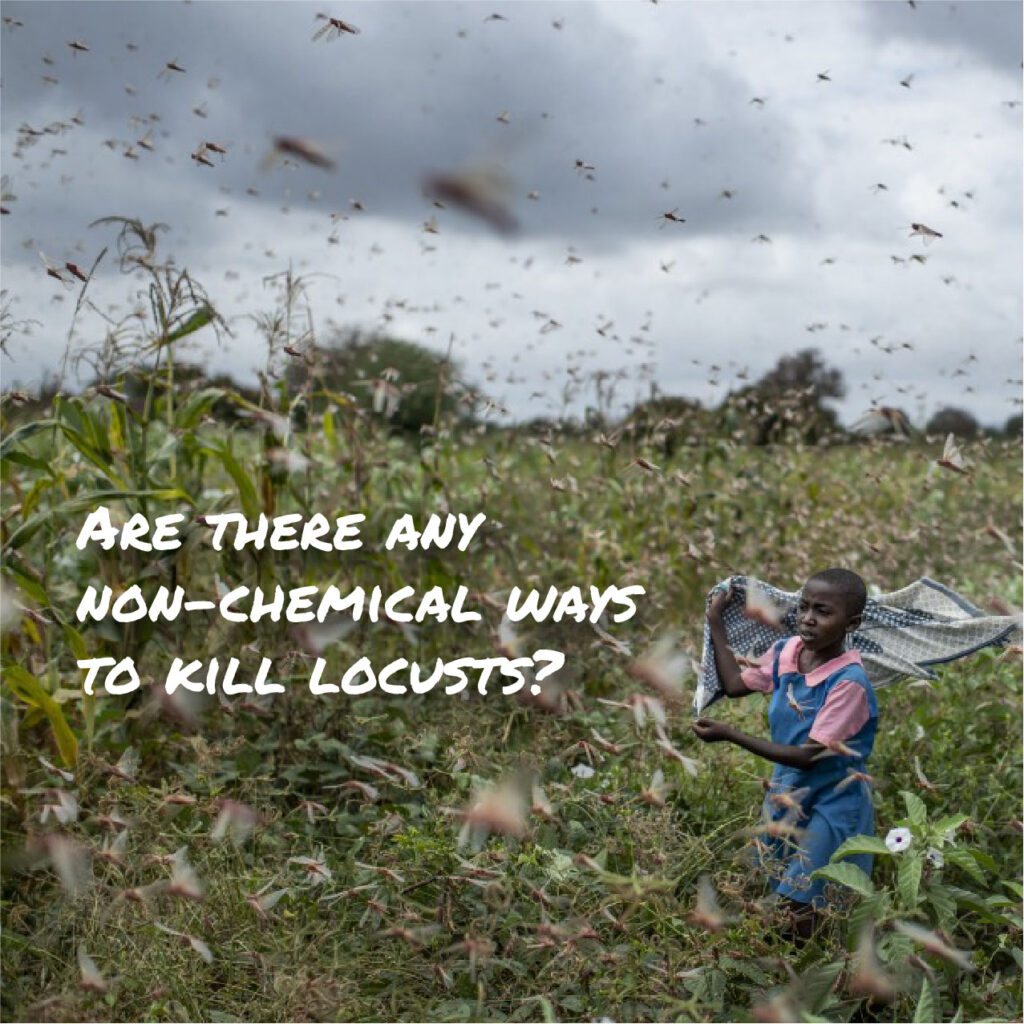
Are there any non-chemical ways to kill locusts?
Extensive research is in progress on biological control and other means of non-chemical control of locusts. The current focus is primarily on pathegens and insect growth regulators. Thus far control by natural predators and parasites is limited since locusts can quickly migrate away from most natural enemies. Although giant nets, flamethrowers, lasers and huge vacuums have been proposed in the past, these are not in use for locust control. People and birds often eat locusts but usually not enough to significantly reduce population levels over large areas.
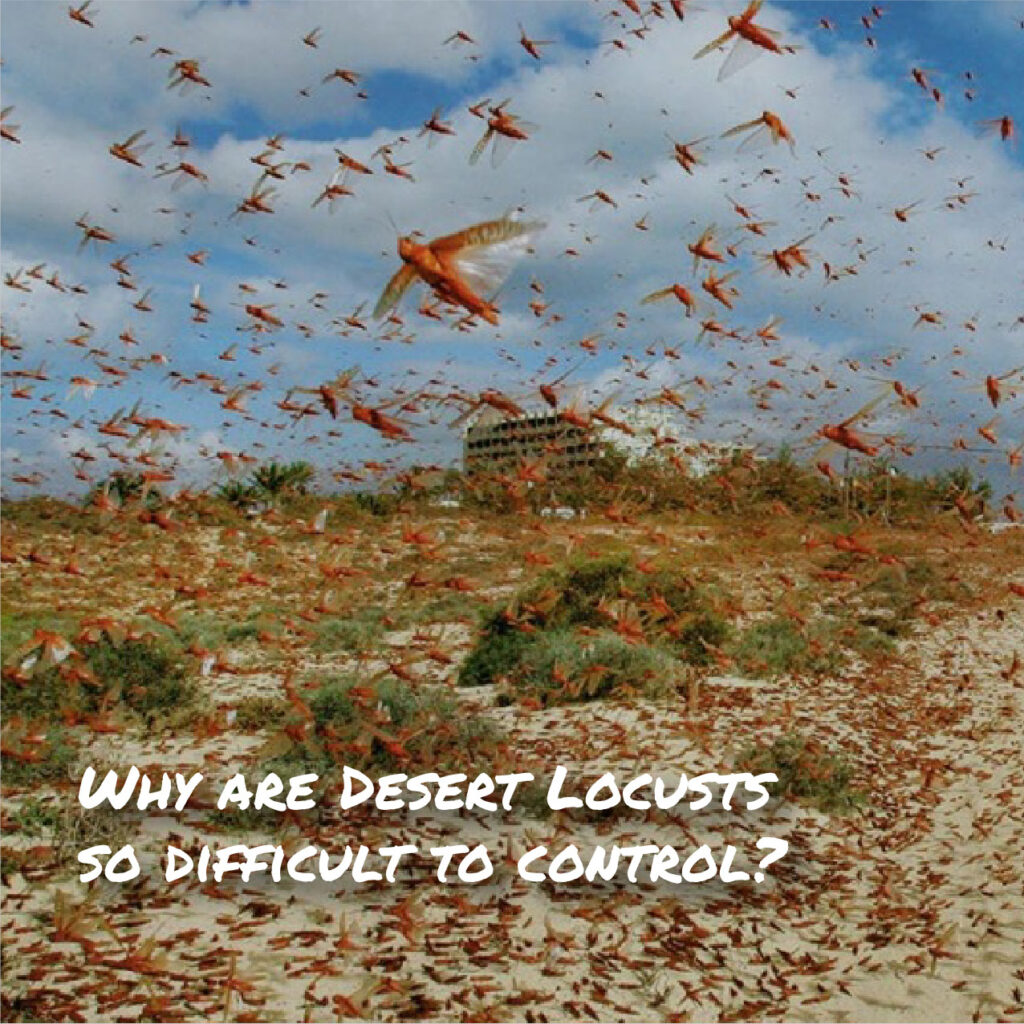
Why are Desert Locusts so difficult to control?
There are many reasons as to why it is difficult to successfully combat the Desert Locust. Some of these are: (1) the extremely large area (16-30 million sq. km) within which locusts can be found, (2) the remoteness and difficult access of such areas, (3) the insecurity or lack of safety (such as land mines) in some areas, (4) the limited resources for locust monitoring and control in some of the affected countries, (5) the undeveloped basic infrastructure (roads, communications, water and food) in many countries, (6) the difficulty in maintaining a sufficient number of trained staff and functioning resources during the long periods of recession in which there is little or no locust activity, (7) political relations amongst affected countries, (8) the difficulty in organizing and implementing control operations in which the pesticide must be applied directly onto the locusts, and (9) the difficulty in predicting outbreaks given the lack of periodicity of such incidents and the uncertainty of rainfall in locust areas.
|Cover photo credit|FAO